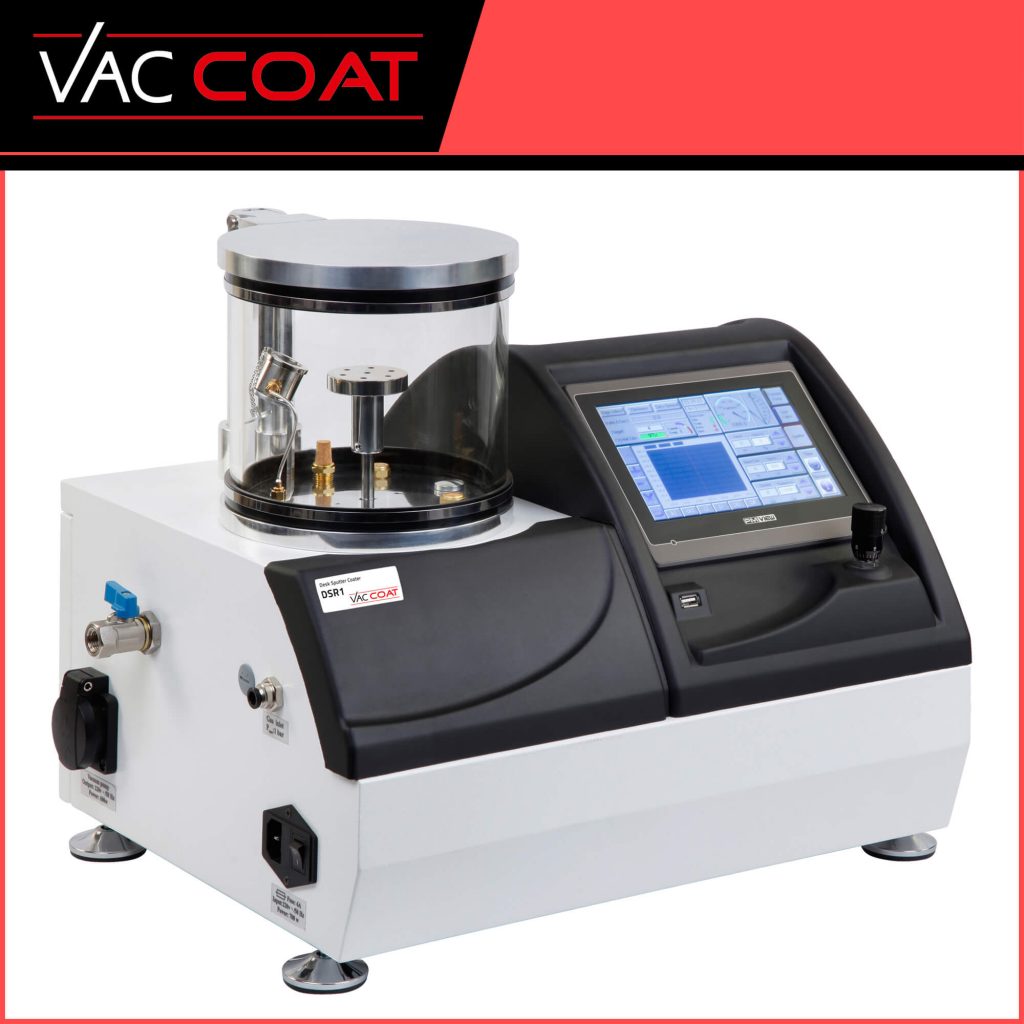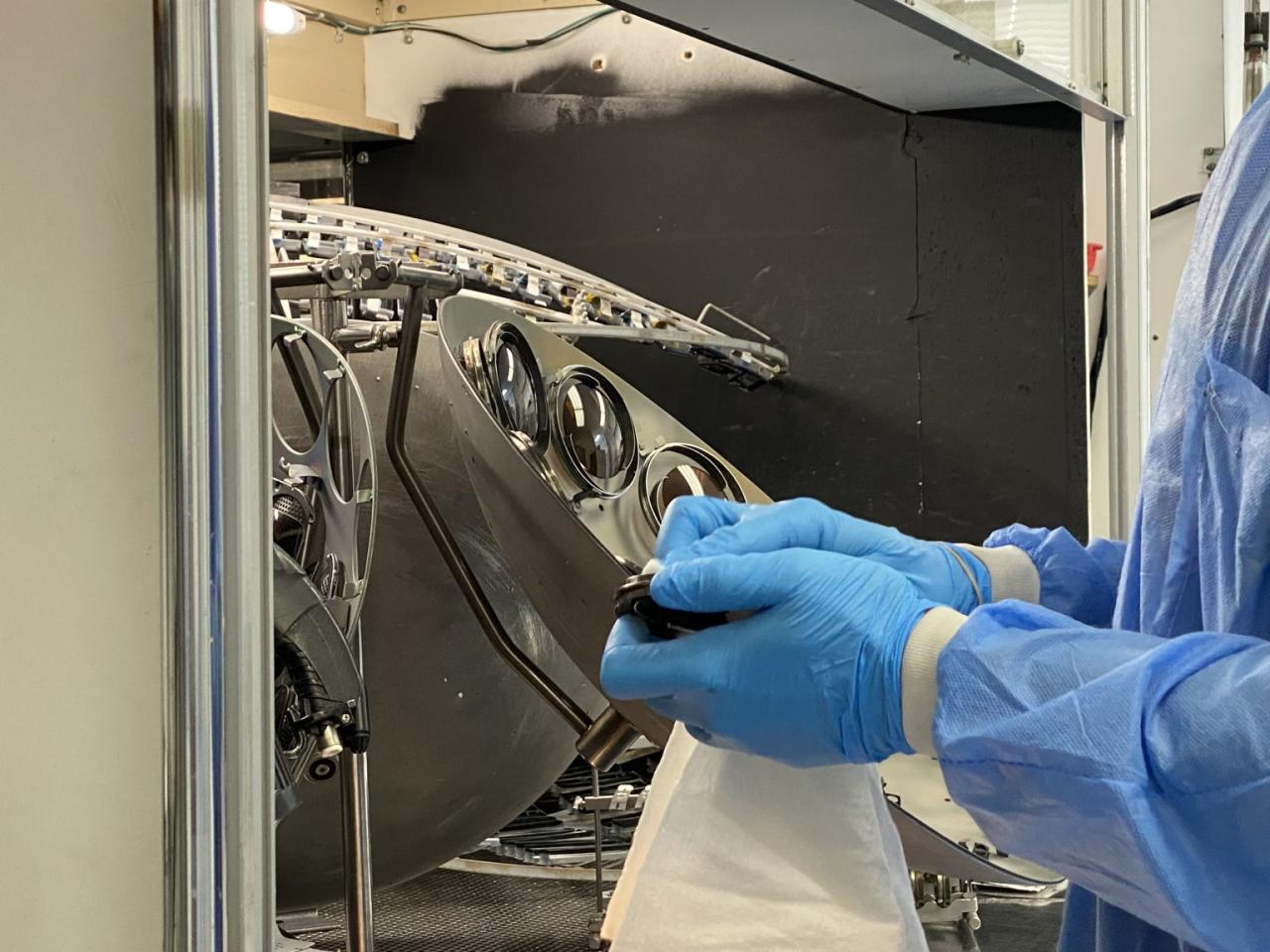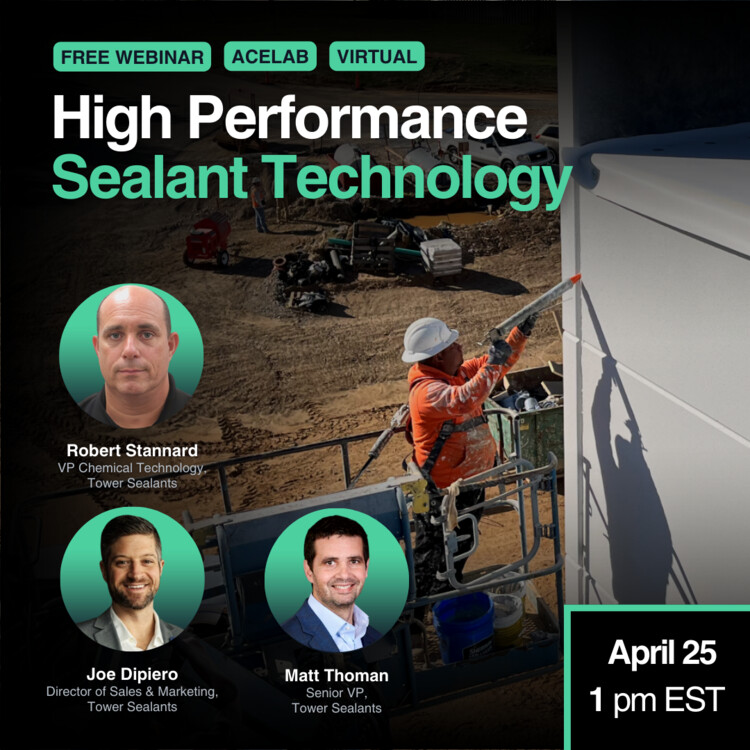Vacuum Coating Technology: Enhancing Surfaces
Vacuum coating technology, a revolutionary process, involves depositing thin layers of material onto surfaces in a vacuum environment. This technique has transformed industries by enhancing surface properties, from increasing durability […]

Vacuum coating technology, a revolutionary process, involves depositing thin layers of material onto surfaces in a vacuum environment. This technique has transformed industries by enhancing surface properties, from increasing durability and scratch resistance to creating stunning visual effects. The process dates back to the early 20th century, with advancements in vacuum technology paving the way for its widespread adoption. Today, vacuum coating is indispensable in diverse fields, including electronics, optics, aerospace, and medical devices.
The core principle of vacuum coating lies in the controlled deposition of materials onto substrates under low-pressure conditions. This process allows for precise control over the coating’s thickness, composition, and properties. By manipulating these parameters, manufacturers can tailor coatings to meet specific performance requirements, such as enhancing hardness, conductivity, or optical reflectivity.
Introduction to Vacuum Coating Technology
Vacuum coating is a versatile and widely used technology that involves depositing thin films of various materials onto substrates in a vacuum environment. This process offers numerous advantages, including precise control over film thickness, superior adhesion, and the ability to create unique and functional coatings with tailored properties.
Fundamental Principles of Vacuum Coating
Vacuum coating relies on the principle of creating a controlled environment where the substrate and the coating material interact in a vacuum. The process typically involves several key steps:
– Substrate Preparation: The substrate surface is thoroughly cleaned and prepared to ensure optimal adhesion of the coating.
– Vacuum Creation: The coating chamber is evacuated to a low pressure, typically in the range of 10-3 to 10-6 Torr, to minimize the presence of air molecules.
– Coating Material Vaporization: The coating material is heated or evaporated to create a vapor of atoms or molecules.
– Deposition: The vaporized coating material travels to the substrate surface and deposits onto it, forming a thin film.
– Film Growth: The deposited atoms or molecules interact with the substrate and with each other, forming a cohesive and stable film.
Historical Development of Vacuum Coating
The history of vacuum coating technology can be traced back to the early 20th century:
– 1900s: The first vacuum coating processes were developed using thermal evaporation, where a material was heated in a vacuum chamber to vaporize it.
– 1930s: Sputtering techniques were introduced, using ions to bombard a target material, leading to the deposition of atoms onto the substrate.
– 1950s: The development of electron beam evaporation allowed for higher deposition rates and better control over film properties.
– 1970s: Ion plating techniques were developed, combining sputtering and evaporation to create coatings with enhanced adhesion and properties.
– Present Day: Advancements in vacuum coating technology continue, with the development of new techniques like pulsed laser deposition and atomic layer deposition.
Applications of Vacuum Coating Technology
Vacuum coating technology has a wide range of applications across various industries:
– Optical Coatings: Anti-reflective coatings on eyeglasses, lenses, and solar panels; high-reflectivity coatings for mirrors and lasers.
– Electronics: Protective coatings on semiconductors, transistors, and integrated circuits; conductive coatings for printed circuit boards.
– Tooling and Manufacturing: Hard coatings on cutting tools, molds, and dies for improved wear resistance and durability.
– Medical Devices: Biocompatible coatings on implants, stents, and surgical instruments for improved biocompatibility and reduced infection rates.
– Decorative Coatings: Decorative coatings on jewelry, watches, and other products for enhanced appearance and durability.
– Solar Energy: Thin-film solar cells, which use vacuum coating to deposit layers of photovoltaic materials onto substrates.
Types of Vacuum Coating Processes

Vacuum coating encompasses a diverse array of techniques that leverage the principles of thin film deposition under reduced pressure. This approach allows for the precise control of film properties, leading to enhanced performance and functionalities in various applications. The choice of vacuum coating method depends on factors such as the desired film properties, substrate material, and production scale.
Comparison of Vacuum Coating Methods
The following table provides a comprehensive comparison of various vacuum coating methods, highlighting their distinct characteristics and applications.
| Method | Description | Advantages | Disadvantages |
|---|---|---|---|
| Sputtering | Involves bombarding a target material with ions, causing atoms or molecules to be ejected and deposited onto a substrate. | – High deposition rates. – Excellent adhesion to substrates. – Can deposit a wide range of materials. – Uniform film thickness. |
– Requires high vacuum conditions. – Can be a complex process. – Limited to line-of-sight deposition. |
| Evaporation | Involves heating a source material to a high temperature, causing atoms or molecules to vaporize and deposit onto a substrate. | – Simple and cost-effective. – High deposition rates. – Suitable for depositing thin films of various materials. |
– Limited to line-of-sight deposition. – Can result in poor adhesion to substrates. – Not suitable for depositing high melting point materials. |
| Ion Plating | Combines sputtering and evaporation, involving the deposition of ions onto a substrate in a plasma environment. | – Excellent adhesion to substrates. – Uniform film thickness. – Can deposit a wide range of materials. – High film density. |
– Requires high vacuum conditions. – Complex and expensive process. – Limited to line-of-sight deposition. |
| Chemical Vapor Deposition (CVD) | Involves chemical reactions at the substrate surface, resulting in the deposition of a thin film. | – Can deposit films with high purity and uniformity. – Can be used to deposit films with complex compositions. – Suitable for depositing films on large areas. |
– Requires high temperatures. – Can be a complex process. – May result in environmental pollution. |
Sputtering
Sputtering is a versatile vacuum coating method that involves bombarding a target material with ions, typically inert gas ions like argon. The impact of these ions causes atoms or molecules to be ejected from the target material, known as sputtering. These sputtered particles then travel through the vacuum chamber and deposit onto the substrate, forming a thin film.
Advantages of Sputtering
Sputtering offers several advantages, making it a popular choice for various applications.
- High deposition rates: Sputtering allows for relatively fast deposition rates, enabling efficient production of thin films.
- Excellent adhesion to substrates: The energetic sputtered particles have high kinetic energy, leading to excellent adhesion to the substrate surface.
- Wide range of materials: Sputtering can be used to deposit a wide variety of materials, including metals, ceramics, and semiconductors.
- Uniform film thickness: The sputtering process can produce highly uniform thin films, ensuring consistent properties across the entire substrate surface.
Disadvantages of Sputtering
Despite its numerous advantages, sputtering also has some drawbacks.
- High vacuum conditions: Sputtering requires high vacuum conditions to prevent contamination of the deposited film.
- Complex process: The sputtering process can be complex and require specialized equipment and expertise.
- Limited to line-of-sight deposition: Sputtering is a line-of-sight process, meaning that the deposited film will only cover the areas directly facing the target material.
Applications of Sputtering
Sputtering finds extensive applications in various industries, including:
- Semiconductor manufacturing: Sputtering is widely used in semiconductor manufacturing to deposit thin films of various materials, such as silicon dioxide, silicon nitride, and metals.
- Optical coatings: Sputtering is employed in the production of optical coatings for lenses, mirrors, and other optical components.
- Hard coatings: Sputtering can be used to deposit hard coatings on tools, dies, and other components to improve their wear resistance and durability.
- Thin-film solar cells: Sputtering is a key process in the fabrication of thin-film solar cells, allowing for the deposition of transparent conductive oxides and other critical layers.
Evaporation
Evaporation is a vacuum coating method that involves heating a source material to a high temperature, causing atoms or molecules to vaporize and deposit onto a substrate. The source material can be in the form of a solid or a liquid, depending on its melting point and the desired deposition temperature.
Advantages of Evaporation
Evaporation offers several advantages, making it a cost-effective and versatile coating method.
- Simple and cost-effective: Evaporation is a relatively simple process, requiring less specialized equipment than other vacuum coating methods.
- High deposition rates: Evaporation can achieve high deposition rates, enabling efficient production of thin films.
- Suitable for various materials: Evaporation can be used to deposit thin films of various materials, including metals, alloys, and organic compounds.
Disadvantages of Evaporation
Despite its simplicity and efficiency, evaporation has some limitations.
- Limited to line-of-sight deposition: Evaporation is a line-of-sight process, similar to sputtering.
- Poor adhesion to substrates: The deposited films may have poor adhesion to the substrate surface, especially for materials with low melting points.
- Not suitable for high melting point materials: Evaporation is not suitable for depositing materials with high melting points, as they may not readily vaporize at practical temperatures.
Applications of Evaporation
Evaporation finds applications in various industries, including:
- Optical coatings: Evaporation is used to deposit thin films on lenses, mirrors, and other optical components, enhancing their reflectivity, transmissivity, or anti-reflective properties.
- Thin-film transistors (TFTs): Evaporation is employed in the fabrication of TFTs for displays, sensors, and other electronic devices.
- Protective coatings: Evaporation can be used to deposit protective coatings on various surfaces, such as metals, plastics, and glass, to improve their scratch resistance, corrosion resistance, or wear resistance.
Ion Plating
Ion plating is a vacuum coating method that combines aspects of sputtering and evaporation. It involves the deposition of ions onto a substrate in a plasma environment, resulting in high-quality, adherent thin films. The process typically starts with the evaporation of the source material, followed by ionization of the evaporated atoms or molecules in a plasma. These ions are then accelerated towards the substrate, leading to a highly energetic deposition process.
Advantages of Ion Plating
Ion plating offers several advantages over traditional sputtering and evaporation methods.
- Excellent adhesion to substrates: The energetic ion bombardment during deposition results in excellent adhesion to the substrate surface.
- Uniform film thickness: Ion plating can produce highly uniform thin films, ensuring consistent properties across the substrate.
- Wide range of materials: Ion plating can be used to deposit a wide variety of materials, including metals, ceramics, and compounds.
- High film density: The ion bombardment during deposition leads to high film density, resulting in improved mechanical properties.
Disadvantages of Ion Plating
Ion plating is a complex and expensive process, which is a significant drawback.
- High vacuum conditions: Ion plating requires high vacuum conditions to prevent contamination of the deposited film.
- Complex and expensive process: Ion plating is a complex process that requires specialized equipment and expertise.
- Limited to line-of-sight deposition: Similar to sputtering and evaporation, ion plating is a line-of-sight process.
Applications of Ion Plating
Ion plating finds applications in various industries, including:
- Tool coatings: Ion plating is used to deposit hard coatings on tools, dies, and other components, improving their wear resistance, cutting performance, and tool life.
- Optical coatings: Ion plating can be used to deposit optical coatings on lenses, mirrors, and other optical components, enhancing their reflectivity, transmissivity, or anti-reflective properties.
- Corrosion-resistant coatings: Ion plating is employed to deposit corrosion-resistant coatings on metals, protecting them from oxidation and other environmental degradation.
- Biocompatible coatings: Ion plating can be used to deposit biocompatible coatings on medical implants and devices, improving their biocompatibility and reducing the risk of rejection.
Materials Used in Vacuum Coating
Vacuum coating processes rely on a wide variety of materials to achieve desired properties in the deposited films. These materials are chosen based on their specific characteristics, which determine the final properties of the coating.
Common Materials Used in Vacuum Coating
The selection of coating materials is crucial for achieving the desired performance and functionality of the coated substrate. The most common materials used in vacuum coating processes are categorized into metals, ceramics, and polymers.
- Metals: Metals are widely used in vacuum coating due to their excellent electrical conductivity, thermal conductivity, and resistance to corrosion. Examples include:
- Aluminum (Al): A highly reflective and corrosion-resistant metal, commonly used in optical coatings, decorative coatings, and heat-resistant coatings.
- Gold (Au): A highly conductive and corrosion-resistant metal, used in electrical contacts, decorative coatings, and optical coatings.
- Chromium (Cr): A hard and corrosion-resistant metal, often used as a barrier layer to prevent diffusion of other materials.
- Titanium (Ti): A strong and biocompatible metal, used in medical implants, optical coatings, and hard coatings.
- Nickel (Ni): A hard and corrosion-resistant metal, used in decorative coatings, wear-resistant coatings, and magnetic coatings.
- Ceramics: Ceramics are inorganic materials that are known for their high hardness, chemical resistance, and high melting points. Examples include:
- Silicon dioxide (SiO2): A common dielectric material, used in optical coatings, anti-reflective coatings, and passivation layers.
- Titanium dioxide (TiO2): A highly refractive material, used in optical coatings, anti-reflective coatings, and self-cleaning coatings.
- Aluminum oxide (Al2O3): A hard and chemically resistant material, used in wear-resistant coatings, optical coatings, and protective coatings.
- Silicon nitride (Si3N4): A hard and chemically resistant material, used in wear-resistant coatings, protective coatings, and optical coatings.
- Polymers: Polymers are organic materials that offer flexibility, low friction, and good adhesion properties. Examples include:
- Polytetrafluoroethylene (PTFE): A highly non-stick material, used in anti-fouling coatings, protective coatings, and wear-resistant coatings.
- Polyethylene (PE): A flexible and durable material, used in barrier coatings, anti-static coatings, and protective coatings.
- Polypropylene (PP): A lightweight and durable material, used in barrier coatings, protective coatings, and anti-static coatings.
Properties and Characteristics of Coating Materials
The properties and characteristics of coating materials determine their suitability for specific applications.
- Hardness: The ability of a material to resist scratching or indentation. Harder coatings provide better wear resistance and durability.
- Optical properties: The ability of a material to reflect, transmit, or absorb light. Optical coatings are designed to control the flow of light, often used in lenses, mirrors, and filters.
- Electrical conductivity: The ability of a material to conduct electricity. Conductive coatings are used in electronic devices, sensors, and electrodes.
- Thermal conductivity: The ability of a material to conduct heat. Thermal coatings are used to control heat transfer, often used in heat sinks, thermal barriers, and insulation.
- Corrosion resistance: The ability of a material to resist chemical attack or degradation. Corrosion-resistant coatings are used to protect surfaces from environmental damage.
- Adhesion: The ability of a material to bond to a substrate. Good adhesion is crucial for long-term performance and durability of the coating.
Comparison of Coating Materials
Different coating materials offer unique advantages and disadvantages depending on the desired properties and application.
- Metals: Generally offer excellent electrical and thermal conductivity, good corrosion resistance, and high hardness. However, they can be expensive and may have limited flexibility.
- Ceramics: Known for their high hardness, chemical resistance, and high melting points. However, they can be brittle and may have poor adhesion to certain substrates.
- Polymers: Offer flexibility, low friction, and good adhesion properties. However, they may have lower hardness and thermal stability compared to metals and ceramics.
Advantages and Challenges of Vacuum Coating: Vacuum Coating Technology
Vacuum coating technology has become an integral part of various industries, offering numerous advantages in enhancing surface properties and functionalities. While the benefits are undeniable, there are also challenges associated with the process. Understanding both the advantages and challenges is crucial for optimizing the application of vacuum coating technology.
Advantages of Vacuum Coating
Vacuum coating technology offers several advantages, making it a highly sought-after surface modification technique. These benefits contribute to the wide range of applications and industries where vacuum coating is employed.
- Enhanced Surface Properties: Vacuum coating allows for the deposition of thin films with tailored properties, such as increased hardness, wear resistance, corrosion resistance, optical reflectivity, and electrical conductivity. This enhances the performance and longevity of coated components.
- Precise Control and Uniformity: Vacuum coating processes offer precise control over film thickness and composition, ensuring uniform coatings across the entire surface. This precision is essential for achieving consistent performance and reliability in applications requiring specific properties.
- Wide Range of Materials: Vacuum coating techniques are versatile and can be applied to a wide range of materials, including metals, plastics, ceramics, and glass. This versatility makes it suitable for various industries, from aerospace and automotive to electronics and optics.
- Cost-Effectiveness: In many cases, vacuum coating provides a cost-effective solution compared to alternative surface modification techniques. This is especially true when considering the improved performance and extended lifespan of coated components.
- Environmental Friendliness: Vacuum coating processes are generally environmentally friendly, as they use minimal energy and generate minimal waste. This makes it a sustainable option for surface modification compared to traditional methods that may involve harsh chemicals or high energy consumption.
Challenges of Vacuum Coating
While vacuum coating offers numerous advantages, there are also challenges associated with the process. Addressing these challenges is crucial for optimizing the effectiveness and efficiency of vacuum coating technology.
- High Initial Investment: Setting up a vacuum coating facility requires a significant initial investment in equipment, infrastructure, and specialized personnel. This can be a barrier for smaller companies or those with limited budgets.
- Process Complexity: Vacuum coating processes can be complex and require specialized knowledge and expertise. This complexity can lead to difficulties in optimizing process parameters and ensuring consistent results.
- Limited Coating Thickness: Vacuum coating typically results in relatively thin films, which may not be suitable for applications requiring thicker coatings or high levels of protection. This limitation may require alternative techniques or multiple coating layers to achieve the desired properties.
- Substrate Compatibility: Some materials may not be compatible with vacuum coating processes, potentially leading to adhesion issues or undesirable surface modifications. Careful substrate preparation and selection are essential for successful coating.
- Vacuum Environment: Maintaining a high vacuum environment is crucial for successful coating, as it prevents contamination and ensures optimal film deposition. This can be challenging, especially for large-scale production, and requires specialized equipment and maintenance.
Strategies to Overcome Challenges, Vacuum coating technology
To overcome the challenges associated with vacuum coating, several strategies can be implemented:
- Collaboration and Partnerships: Small and medium-sized enterprises (SMEs) can benefit from collaborations with larger companies or research institutions to access specialized equipment and expertise. This shared resource model can help reduce initial investment costs and provide access to advanced technologies.
- Process Optimization and Automation: Implementing process optimization techniques and automation can enhance efficiency, reduce errors, and improve consistency. This can involve using advanced control systems, robotics, and data analysis tools.
- Advanced Coating Techniques: Exploring advanced coating techniques, such as sputtering, ion plating, and pulsed laser deposition, can overcome limitations associated with traditional vacuum coating methods. These techniques offer improved control, adhesion, and coating thickness capabilities.
- Substrate Pre-Treatment: Proper substrate preparation is crucial for successful coating. Techniques like cleaning, etching, and surface modification can enhance adhesion and minimize coating defects.
- Vacuum System Maintenance: Regular maintenance of the vacuum system is essential for maintaining optimal operating conditions. This includes monitoring vacuum levels, replacing worn parts, and performing periodic calibrations.
Summary
Vacuum coating technology continues to evolve, driven by the relentless pursuit of innovation and the need to address the ever-growing demands of modern industries. As researchers explore new materials and deposition techniques, the possibilities for this transformative technology expand. From enhancing the lifespan of medical implants to creating advanced optical coatings for telescopes, vacuum coating is poised to play a pivotal role in shaping the future of various sectors.
Vacuum coating technology is a versatile process used in many industries, from electronics to optics. It involves depositing thin layers of materials onto substrates under vacuum conditions, creating surfaces with unique properties. While this technology is essential for many applications, it’s important to remember that comfort and warmth are also crucial aspects of our lives.
For instance, a cozy evening by a fireplace can be just as fulfilling. If you’re looking for a reliable and stylish gas fireplace, consider exploring the options from gas technologies inc gas fireplace. Back to vacuum coating technology, the possibilities are endless, allowing for customized coatings tailored to specific needs.







